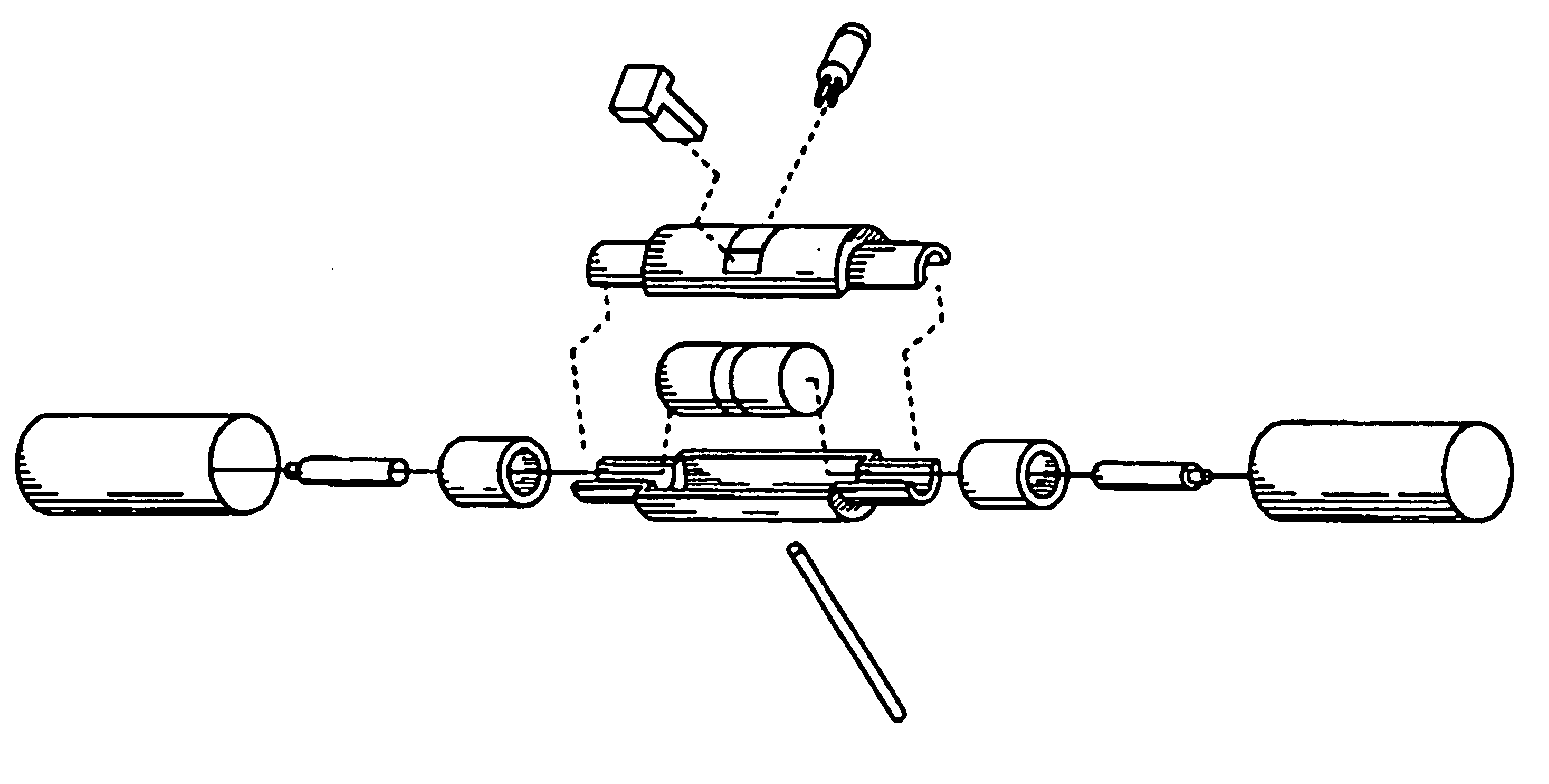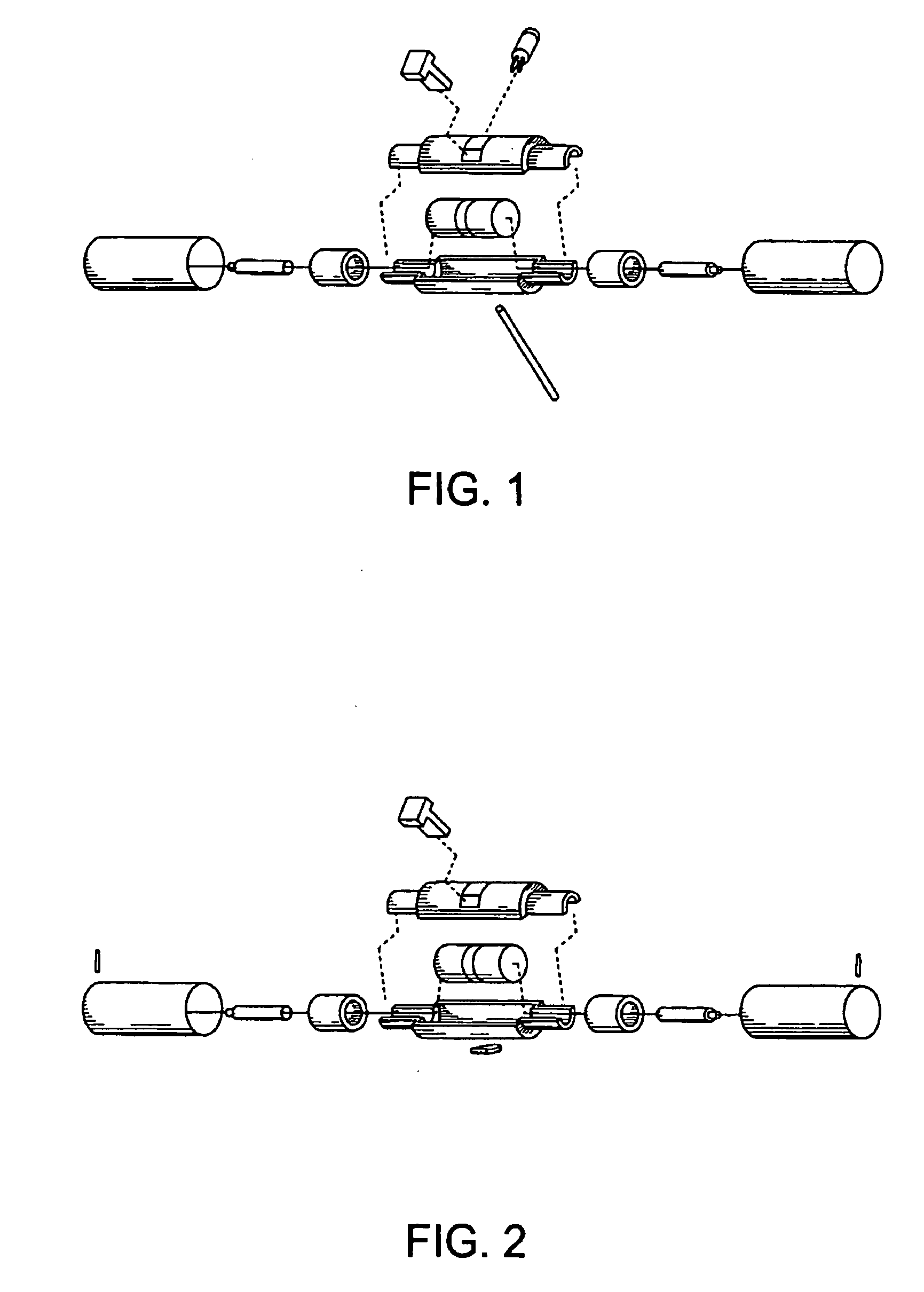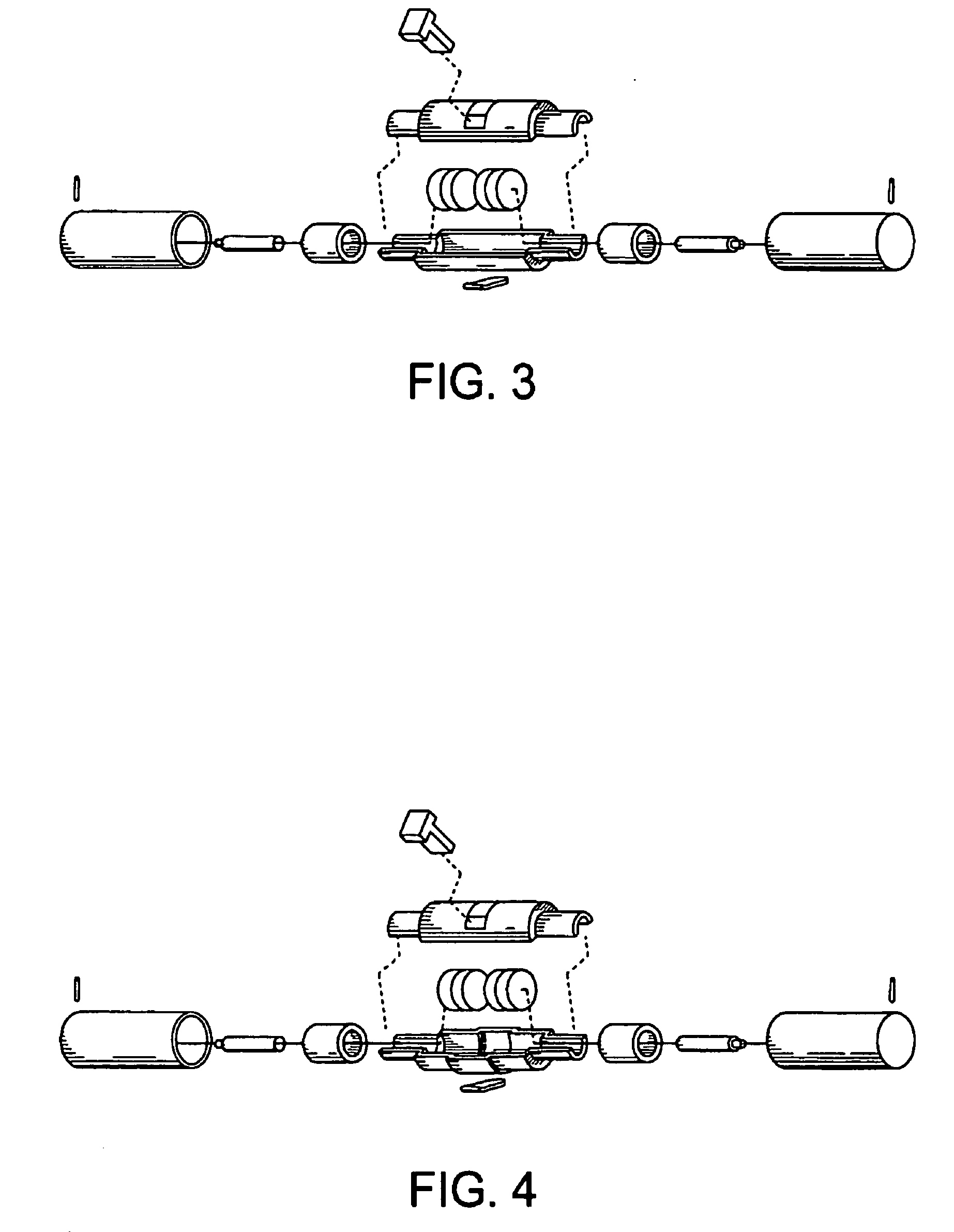Robot for surgical applications
a technology for surgical applications and robots, applied in the field of microrobotics, can solve the problems of limited use of micro-robots, inability to wirelessly connect to the network, and the lack of micro-robots in laparoscopic or other minimally invasive surgery to da
- Summary
- Abstract
- Description
- Claims
- Application Information
AI Technical Summary
Benefits of technology
Problems solved by technology
Method used
Image
Examples
example 1
Mobile Mini Robot
[0066] The constraints placed on the size of the robot according to the present invention were factors in determining the size and shape of the initial prototype of the embodiment described herein. The mobile robot was constructed to be cylindrical in shape, with the treaded wheels of the mobile robot covering a substantial portion of the surface area of the body. The robot's diameter was designed to be less than 15 mm so as to be able to, in this embodiment, fit through a port in a tool that is currently used in laparoscopic surgical techniques.
[0067] The size and function of this robot dictated also the use of very small electric motors. The first motors tested were motors that are used to vibrate pagers and mobile phones; however, these motors were found to be inadequate to supply the torque needed to move the robot. A suitable motor was selected. The electronics selected initially consisted of a modified control chip for the brushless motors that were selected...
example 2
Manipulator Arm Design
[0120] The design process of the manipulator arm resulted in a working prototype. The original design was illustrated using a three-dimensional (3D) computer-aided-drafting (CAD) file using Solid Works® 2001. Utilizing the CAD program, the linkages, motors and camera were drawn with accurate dimensions.
[0121] The initial designs for one embodiment of the invention included the idea of conserving space by attaching motors to the linkages. Using miter gears, the rotational force of the motors was transmitted 90 degrees to rotate each link. The CAD drawing shown in FIG. 8 illustrates the initial design with all pieces drawn to scale. The CAD design was a big step in determining the lengths of each linkage and how the size of each component would relate to one another. The miter gears are a stock product from Stock Drive Products / Sterling Instruments. The initial CAD design allowed determination of the dimensions for the motor and camera; thus, each of the two li...
PUM
 Login to View More
Login to View More Abstract
Description
Claims
Application Information
 Login to View More
Login to View More - R&D
- Intellectual Property
- Life Sciences
- Materials
- Tech Scout
- Unparalleled Data Quality
- Higher Quality Content
- 60% Fewer Hallucinations
Browse by: Latest US Patents, China's latest patents, Technical Efficacy Thesaurus, Application Domain, Technology Topic, Popular Technical Reports.
© 2025 PatSnap. All rights reserved.Legal|Privacy policy|Modern Slavery Act Transparency Statement|Sitemap|About US| Contact US: help@patsnap.com



